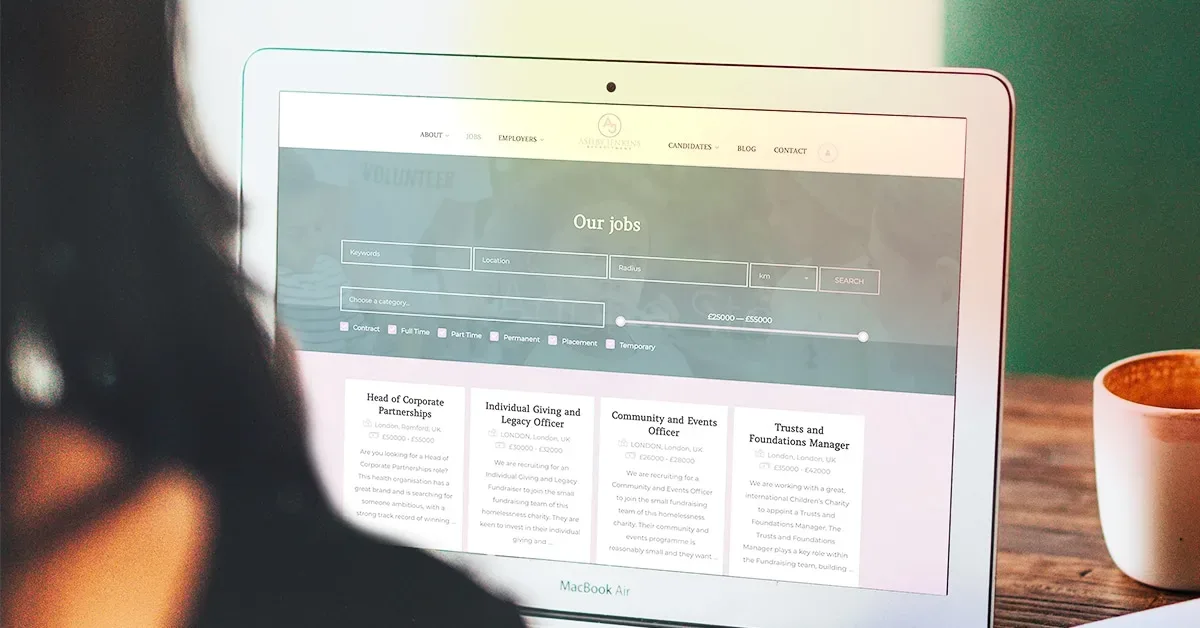A candidate has seen a job or a social media post and clicked on the link to your website, or perhaps your agency has been recommended to them so they’ve navigated to your website to find out more. But what do they do now? What are they looking for? What pages do they visit? How do they navigate through your recruitment website and how far down the pages do they scroll? You might wonder why that matters. After all, they’ve found your site and visited it – job done, right?
Except that is just the first step. What you want them to do is to to find the information they need, read content that interests them and keeps them on your site, discover an opportunity that fits and, ultimately, apply. Candidate experience is incredibly important and it is essential that we understand candidate behaviour in order to make changes and improve that experience.
Different types of candidate
Firstly, it’s necessary to differentiate between the varying types of candidate that are likely to visit your website. Not all candidates will turn up ready to apply for a specific job – or any job at all. Some will simply be checking you out, and that’s where your branding and website design is so important. Ensure your website is easy to navigate and reflects your brand and the type of recruiter you are. The sectors you recruit for should be clear and all important information easy to find. Others will have been directed to your website by a job board, social media post or personal recommendation. They will be wanting to find your jobs page immediately so make it easy for them with simple signposting. Others might have landed on your blog page, found your content useful and want to explore further. This is why clear navigation throughout your website is vital.
Visiting times and duration
According to data from our 2020 Recruitment Website Trends Report, the months in which candidates visit recruitment websites most are January, April, June and August, with a significant drop towards the end of the year as the industry winds down over the Christmas holidays. This is in line with a new year, new job mentality, a fresh start for spring and a summer break bringing renewed perspective on career choices. What’s interesting is how long a candidate stays on a recruitment website – an average of just over 2 minutes. What’s more, over half (53%) of users who visit recruitment websites drop off without any further interaction. In other words, they arrive at the landing page but then fail to navigate to other pages or perform any call to action. That bounce rate may be just within the average range but it is far from ideal and is an indication that many recruiters should take action to increase visitor engagement.
Reading material
Incorporating a blog page packed with quality content onto your recruitment website is a good idea for many reasons. It may be the avenue through which a candidate finds your website in the first place – they discover your content through Google or social media, like what they read and have a look round the rest of your site. Once they read something interesting and relevant they are also more likely to return, even if they are not currently actively looking for a job or don’t find a suitable job at that time. It’s also a great way to build on your identity, creating a brand that candidates trust.
Human contact
Sometimes a candidate simply wants to talk to a recruiter to discuss their situation and what options they have. Ensure your contact page is easy to navigate to – there should be a link to it on every page as well as in your navigation bar – and include all forms of contact, e.g. your business’ LinkedIn profile as well as phone numbers and email.
Apply for a job
This is the end game, what you ultimately want from a candidate visiting your recruitment website. However, according to a report by AppCast, only 5-10% of all candidates that view a job advert on a recruitment website go on to complete an application. Of course, for some, the job won’t be suitable, but there are clearly blockers for many that could be potential hires. Is your application process too lengthy? The job description unclear, too wordy or not detailed enough? Are they viewing the job page on mobile but your site isn’t optimised for mobile devices? Once they’re on your jobs page they want comprehensive filters to make it easy to search for the right jobs. When they’ve found one they want to apply for, again make it simple with options such as apply with or without a CV, through LinkedIn, with attachments for portfolios, and so on.
What to avoid
The candidate experience often begins long before the candidate lands on your website. You need to think about how easy it is to find your website through a search. Make sure your website is fully search engine optimised so that it appears as far up the rankings as possible. Once they are on your website make the candidate journey smooth. Ensure it is clear where a candidate should be navigating to and ensure your jobs page and contact information is easy to find. Finally, no-one wants to trudge through a clunky online application process. Don’t give talent a reason to click away and look elsewhere. Not only will you lose a potential hire, but you also run the risk of damaging your brand.


